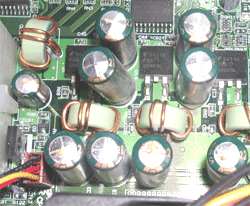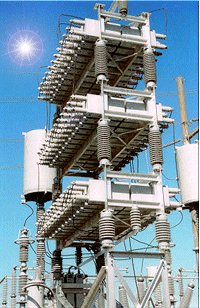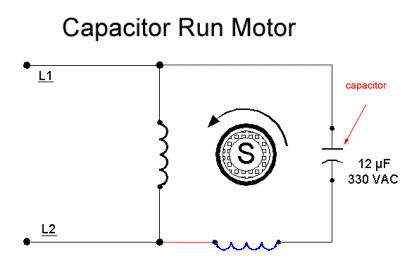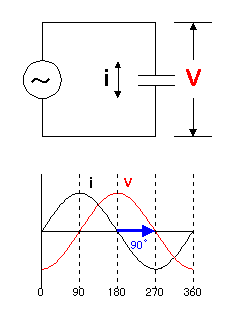|
Capacitors |
||||||
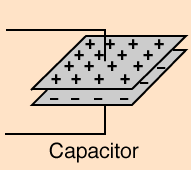 Capacitive loads transduce electrical energy into an electrostatic field that stores energy. Capacitors are rarely used to perform familiar work operations that resistive and inductive loads do. (stud welding, heart defibrillators are examples of capacitors at work) Capacitors are used for a variety of uses in electronics (filtering, timing, coupling) and to correct power factor and assist in motor starting/running in the power electrical field.
A capacitor stores
energy when electrons are separated on 2 plates that have an insulating
material between them (dielectric) Since it can store and release a small amount of electrical charge on either plate in an AC circuit it appears to be a resistor The symbol for capacitance
is C and
is measured in F
.... Farads
As the source frequency increases a capacitor will appear to have less resistance and at very high frequencies appear no to exist (charge is flowing on and off the plates that never fully charge) Opposition to current flow in an AC circuit with capacitors is called Capacitive Reactance .... Xc f increases Xc decreases (notice it's opposite in inductors) f decreases
Xc increases
phase shifting of current in an inductive AC circuit note the current leads applied voltage by 90*
When resistance and reactance (XL
and Xc)
are added vectors must be used
since they are out of phase by 90* |
